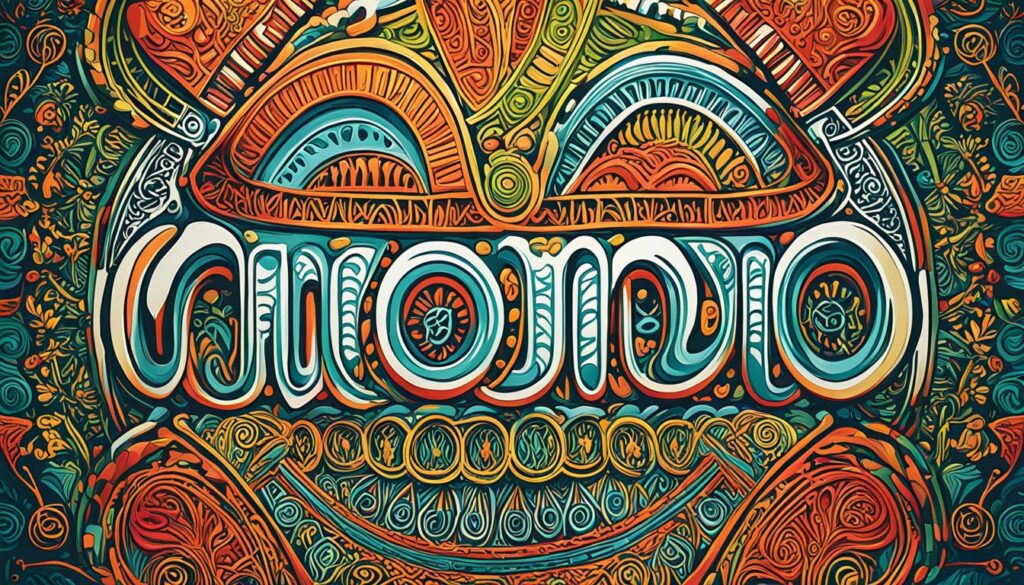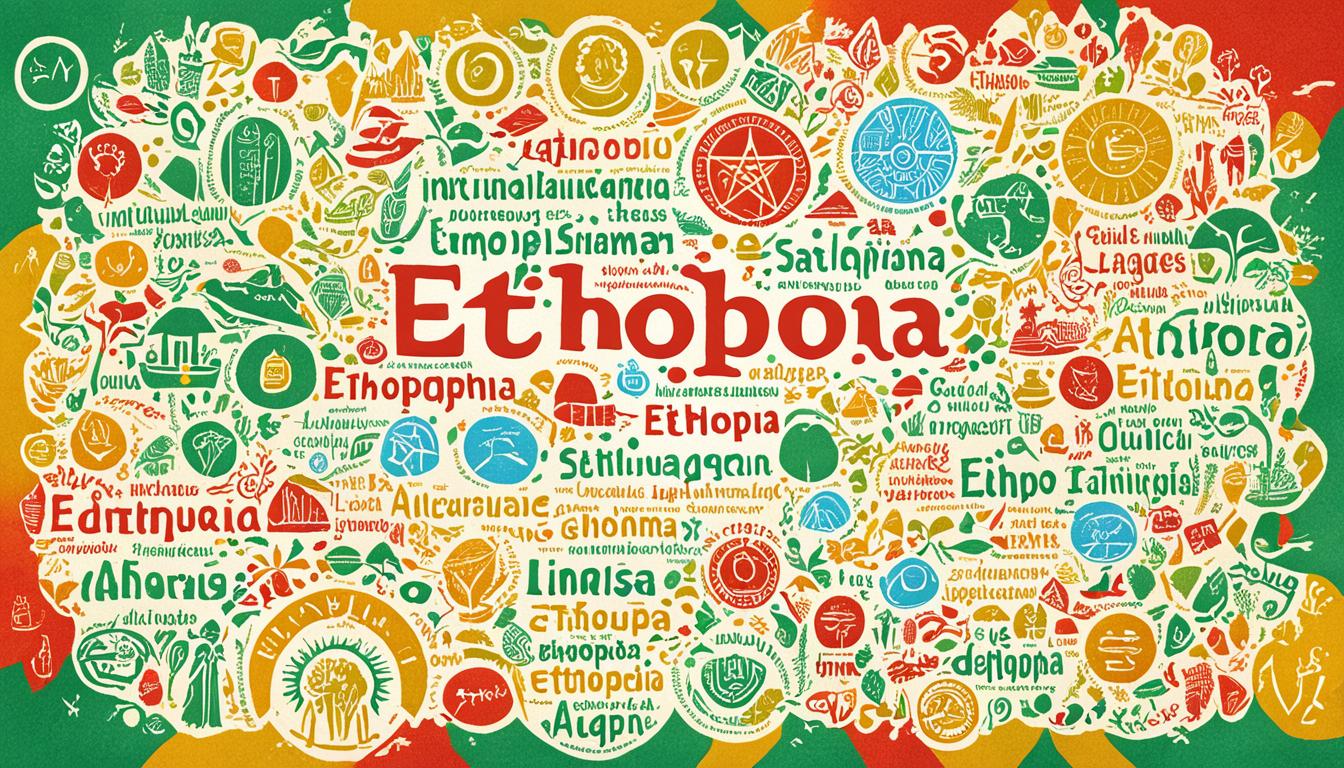How Many Languages in Ethiopia?
Prepare to be amazed by the linguistic diversity of Ethiopia! This African nation boasts an astonishing number of languages, with over 80 distinct languages spoken within its borders. This diverse array of languages reflects the rich cultural heritage and ethnic tapestry of Ethiopia.
According to Ethnologue, there are 109 languages spoken in Ethiopia, while Glottolog lists 90 individual languages. The official languages of Ethiopia are Amharic, Afar, Oromo, Somali, and Tigrinya, which are recognized by the Ethiopian constitution. In addition to these official languages, numerous minority languages are spoken in different regions, contributing to the rich linguistic mosaic of the country.
Key Takeaways:
- Ethiopia is home to over 80 distinct languages.
- The official languages of Ethiopia are Amharic, Afar, Oromo, Somali, and Tigrinya.
- Amharic is the most widely spoken language in Ethiopia and holds the status of an official language.
- Oromo is the largest ethnic group in Ethiopia, and their language holds the distinction of being the national language.
- The linguistic diversity of Ethiopia is a reflection of its rich cultural heritage and diverse ethnic makeup.
The Afroasiatic Languages of Ethiopia
Ethiopia’s linguistic diversity is a fascinating tapestry of languages, many of which belong to the Afroasiatic family. This language family can be further categorized into three major branches: Semitic, Cushitic, and Omotic. Let’s explore the rich linguistic heritage of Ethiopia and the languages that make up these branches.
Semitic Languages
The Semitic languages have a significant presence in Ethiopia and include notable languages like Amharic, Tigrinya, and Guragigna. These languages have deep historical roots and are widely spoken throughout the country. Amharic, in particular, holds the distinction of being the official language of Ethiopia and plays a crucial role in daily communication, administration, and education.
Cushitic Languages
The Cushitic languages, another branch of Afroasiatic, include Oromo, Somali, and Afar. Oromo, with over 40 million speakers, is not only widely spoken in Ethiopia but also holds the title of being the national language of the country. These languages are essential to the cultural fabric of Ethiopia, preserving traditions, history, and identity.
Omotic Languages
The Omotic languages, though less widely spoken, have their significance in Ethiopia. Languages like Gamo-Gofa-Dawro and Wolaytta are part of this branch and contribute to the linguistic diversity of the country. These languages hold cultural and historical importance for the communities that speak them.
“The linguistic diversity of Ethiopia is a testament to the rich cultural heritage and unique identity of its people.”
Afroasiatic Languages in Ethiopia
| Language Family | Representative Languages |
|---|---|
| Semitic | Amharic, Tigrinya, Guragigna |
| Cushitic | Oromo, Somali, Afar |
| Omotic | Gamo-Gofa-Dawro, Wolaytta |
The Afroasiatic languages of Ethiopia, including Semitic, Cushitic, and Omotic, showcase the country’s linguistic diversity and cultural richness. Each language contributes to Ethiopia’s vibrant tapestry, preserving traditions, enabling communication, and shaping the nation’s identity.
Amharic: The Official Language of Ethiopia
In the linguistic tapestry of Ethiopia, Amharic holds a prominent place as the official language of the country. As a Semitic language, Amharic is spoken by over 25 million people in Ethiopia, making it one of the most widely used languages in the region. The significance of Amharic extends beyond everyday communication, playing a vital role in administration, education, and literature.
When it comes to writing, Amharic employs the Ge’ez script, also known as Ethiopic. This unique writing system consists of over 200 characters, adding to the distinctiveness of the Ethiopian literary tradition. In combination with the spoken language, the Amharic script allows for a diverse range of expression in poetry, music, and religious texts.
Amharic’s widespread use and cultural significance make it a pillar of Ethiopian identity and heritage. Its prevalence in various aspects of life reflects its deep-rooted connection to the country’s rich history and diverse society. As Ethiopia continues to embrace its linguistic diversity, Amharic remains a language that unifies and represents the nation.
Amharic Language Facts
- Official language of Ethiopia
- Spoken by over 25 million people
- Semitic language
- Uses the Ge’ez script (Ethiopic)
- Widely used in communication, administration, education, and literature
| Language | Number of Speakers | Writing System |
|---|---|---|
| Amharic | Over 25 million | Ge’ez (Ethiopic) script |
| English | Commonly spoken as a second language | Latin script |
| Afar | 1.5 million | Latin script |
| Oromo | Over 40 million | Latin-based Qubee script |
| Somali | 6 million | Latin script |
| Tigrinya | 7 million | Ge’ez (Ethiopic) script |
To further appreciate the richness of Amharic and its role in Ethiopian culture, let’s delve into the national language of Ethiopia, Oromo, in the next section.
Oromo: The National Language of Ethiopia

Oromo, the language spoken by the largest ethnic group in Ethiopia, holds the distinction of being the national language of the country. With over 40 million speakers, it is one of the most widely spoken languages in East Africa. Oromo belongs to the Cushitic branch of the Afroasiatic language family, which also includes Somali and Afar.
Oromo has a significant cultural significance in Ethiopia, as it plays a crucial role in preserving the rich Oromo culture, history, and identity. The adoption of Oromo as a national language reflects the recognition and respect for the Oromo people’s contributions to the country’s diversity and heritage.
The Oromo Script
Oromo has its own unique script, which was officially adopted in the mid-1990s. This script replaced the previously used Ge’ez script, which was common for many Ethiopian languages. The development and adoption of the Oromo script have been instrumental in promoting literacy and cultural expression among Oromo speakers.
The Oromo script has facilitated the production of literary works, educational materials, and cultural resources in the Oromo language. It has empowered Oromo speakers to write and communicate in their own language, further strengthening their cultural identity and promoting linguistic diversity in Ethiopia.
“The Oromo language and script are invaluable treasures that reflect our cultural heritage and identity. They allow us to preserve and celebrate our rich traditions, history, and literature.” – Oromo community leader
The cultural significance of the Oromo language extends beyond Ethiopia’s borders, with Oromo communities in neighboring countries also using the language to maintain their cultural connections and heritage. The Oromo language and script are symbols of resilience, pride, and unity for the Oromo people.
Conclusion
Ethiopia’s linguistic tapestry is a testament to its rich cultural heritage and diverse ethnic makeup. With over 80 distinct languages spoken within its borders, Ethiopia stands as a shining example of linguistic diversity. The official languages of Ethiopia, including Amharic, Oromo, Somali, Tigrinya, and Afar, serve as the pillars of communication, education, and cultural expression.
Each language spoken in Ethiopia represents a unique cultural heritage, contributing to the country’s vibrant tapestry. Language is an essential part of Ethiopian identity, intricately woven into the fabric of daily life, traditions, and customs. From the rhythmic poetry of Amharic to the expressive storytelling in Oromo, Ethiopia’s linguistic heritage is a living testament to its people’s history and their unyielding commitment to preserving their cultural roots.
As we explore the linguistic landscape of Ethiopia, we witness a country where language serves as a conduit to interconnectedness, understanding, and respect. It bridges gaps, fosters unity, and empowers individuals to share their stories, dreams, and aspirations. Ethiopia’s linguistic diversity is not merely a reflection of its past but continues to shape its present and future, acting as a powerful symbol of strength, resilience, and inclusivity.


